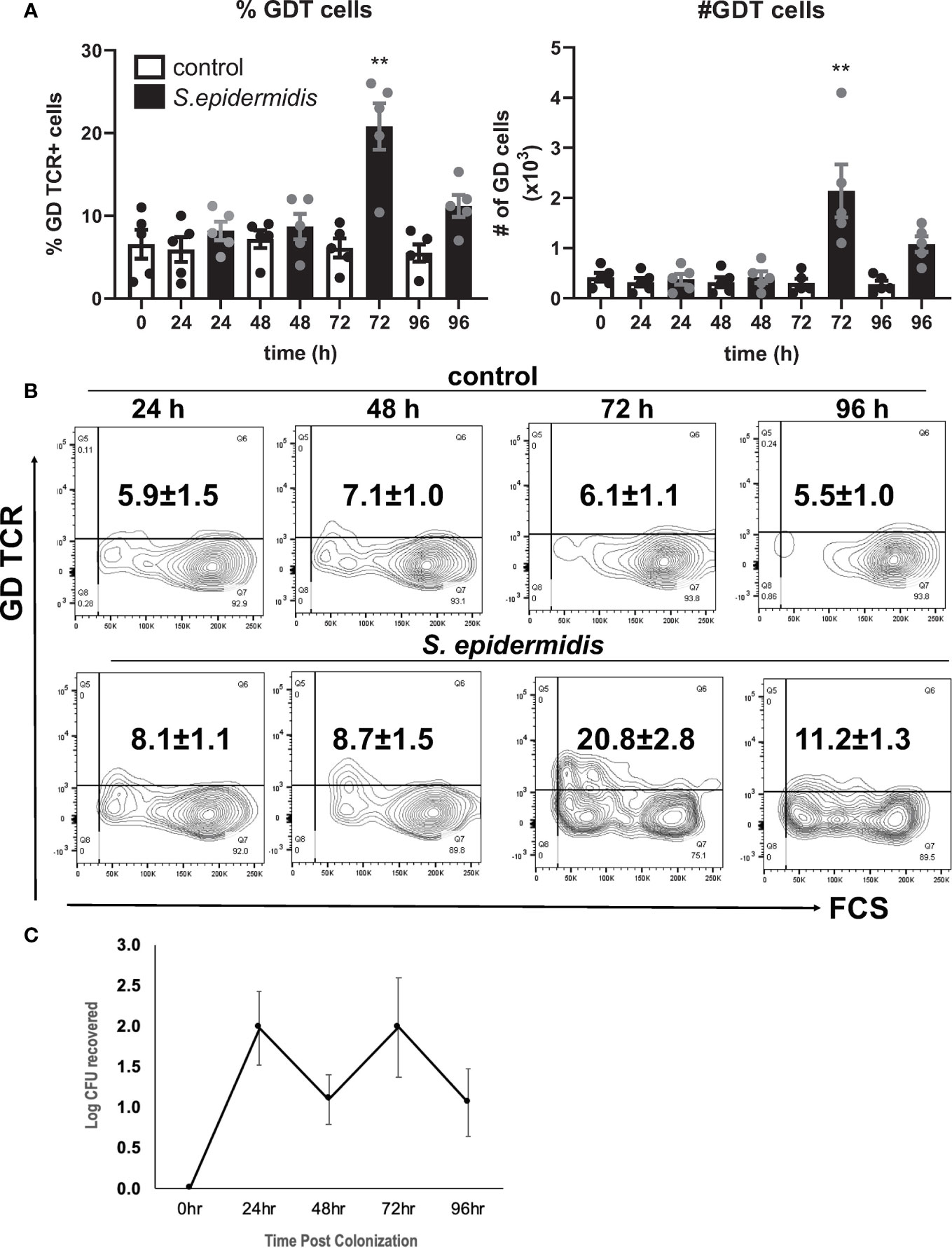
95% of researchers rate our articles as excellent or good
Learn more about the work of our research integrity team to safeguard the quality of each article we publish.
Find out more
CORRECTION article
Front. Immunol. , 10 August 2021
Sec. Microbial Immunology
Volume 12 - 2021 | https://doi.org/10.3389/fimmu.2021.741437
This article is part of the Research Topic Perforins and Cholesterol-Dependent Cytolysins in Immunity and Pathogenesis View all 18 articles
This article is a correction to:
Staphylococcus epidermidis Boosts Innate Immune Response by Activation of Gamma Delta T Cells and Induction of Perforin-2 in Human Skin
 Irena Pastar1†
Irena Pastar1† Katelyn O’Neill2†
Katelyn O’Neill2† Laura Padula2
Laura Padula2 Cheyanne R. Head1
Cheyanne R. Head1 Jamie L. Burgess1
Jamie L. Burgess1 Vivien Chen1
Vivien Chen1 Denisse Garcia2
Denisse Garcia2 Olivera Stojadinovic1
Olivera Stojadinovic1 Suzanne Hower2
Suzanne Hower2 Gregory V. Plano2
Gregory V. Plano2 Seth R. Thaller3
Seth R. Thaller3 Marjana Tomic-Canic1*
Marjana Tomic-Canic1* Natasa Strbo2*
Natasa Strbo2*A Corrigendum on
Staphylococcus epidermidis Boosts Innate Immune Response by Activation of Gamma Delta T Cells and Induction of Perforin-2 in Human Skin
By Pastar I, O’Neill K, Padula L, Head CR, Burgess JL, Chen V, Garcia D, Stojadinovic O, Hower S, Plano GV, Thaller SR, Tomic-Canic M and Strbo N (2020). Front. Immunol. 11:550946. doi: 10.3389/fimmu.2020.550946
In the original article, there was a mistake in Figure 1B as published. The incorrect contour plots for the conditions Control 24 h and S. epidermidis 48 h were mistakenly included into Figure 1B. The correct representative contour plots in Figure 1B appear below.

Figure 1 Staphylococcus epidermidis increases the number of GD T cells in human skin ex vivo. Control, uncolonized, and S. epidermidis colonized skin was maintained on air liquid interface and collected at indicated time points (0, 24, 48, 72, and 96 h). Single cell suspensions were obtained and labeled with live/dead stain, CD45, CD3, and GD TCR. (A) Cells were analyzed using flow cytometry and gated on the CD45+ CD3+ GDT+ population. Bar graphs show SEM frequency (%) and SEM number (#) of skin GD T cells (n = 5). (B) Representative contour plots showing frequency of GD TCR in control and S. epidermidis colonized skin. (C) Number of S. epidermidis colony forming units (CFU) recovered from ex vivo skin explants colonized with S. epidermidis CCN021 on day 0 through day 4. Data represent at least two technical replicates and five independent biological replicates per group. **p < 0.01 (two-way ANOVA with Holm-Sidak multiple-comparison test).
The authors apologize for this error and state that this does not change the scientific conclusions of the article in any way. The original article has been updated.
All claims expressed in this article are solely those of the authors and do not necessarily represent those of their affiliated organizations, or those of the publisher, the editors and the reviewers. Any product that may be evaluated in this article, or claim that may be made by its manufacturer, is not guaranteed or endorsed by the publisher.
Keywords: perforin-2/mpeg-1, human skin, innate immunity, Staphylococcus epidermidis, gamma delta T cells, cytotoxicity
Citation: Pastar I, O’Neill K, Padula L, Head CR, Burgess JL, Chen V, Garcia D, Stojadinovic O, Hower S, Plano GV, Thaller SR, Tomic-Canic M and Strbo N (2021) Corrigendum: Staphylococcus epidermidis Boosts Innate Immune Response by Activation of Gamma Delta T Cells and Induction of Perforin-2 in Human Skin. Front. Immunol. 12:741437. doi: 10.3389/fimmu.2021.741437
Received: 14 July 2021; Accepted: 23 July 2021;
Published: 10 August 2021.
Edited and reviewed by:
Gabriele Pradel, RWTH Aachen University, GermanyCopyright © 2021 Pastar, O’Neill, Padula, Head, Burgess, Chen, Garcia, Stojadinovic, Hower, Plano, Thaller, Tomic-Canic and Strbo. This is an open-access article distributed under the terms of the Creative Commons Attribution License (CC BY). The use, distribution or reproduction in other forums is permitted, provided the original author(s) and the copyright owner(s) are credited and that the original publication in this journal is cited, in accordance with accepted academic practice. No use, distribution or reproduction is permitted which does not comply with these terms.
*Correspondence: Marjana Tomic-Canic, TVRjYW5pY0BtZWQubWlhbWkuZWR1; Natasa Strbo, bnN0cmJvQG1lZC5taWFtaS5lZHU=
†These authors have contributed equally to this work and share first authorship
Disclaimer: All claims expressed in this article are solely those of the authors and do not necessarily represent those of their affiliated organizations, or those of the publisher, the editors and the reviewers. Any product that may be evaluated in this article or claim that may be made by its manufacturer is not guaranteed or endorsed by the publisher.
Research integrity at Frontiers

Learn more about the work of our research integrity team to safeguard the quality of each article we publish.